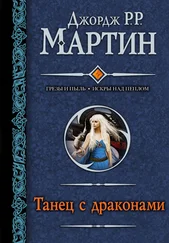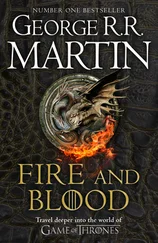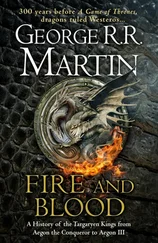Baela Targaryen, when informed of the match, did not share their pleasure. “Lord Rowan is forty years my senior, bald as a stone, with a belly that weighs more than I do,” she purportedly told the King’s Hand. Then she added, “I’ve bedded two of his sons. The eldest and thirdborn, I think it was. Not both at once, that would have been improper.” Whether there is any truth to this we cannot say. Lady Baela was known to be deliberately provocative at times. If that was her purpose here, she was successful. The Hand sent her back to her rooms, posting guards at her door to make certain she remained there until the regents could convene.
Yet a day later, he discovered to his dismay that Baela had fled the castle by some secret means (later it was found she had climbed out a window, swapped clothes with a washerwoman, and walked out the front gate). By the time the hue and cry went up, she was halfway across Blackwater Bay, having hired a fisherman to carry her to Driftmark. There she sought out her cousin, the Lord of the Tides, and poured out her woes to him. A fortnight later, Alyn Velaryon and Baela Targaryen were married in the sept on Dragonstone. The bride was sixteen, the groom nearly seventeen.
Several of the regents, outraged, urged Ser Tyland to appeal to the High Septon for an annulment, but the Hand’s own response was one of bemused resignation. Prudently, he had it put about that the marriage had been arranged by king and court, believing that it was Lady Baela’s defiance that was the scandal rather than her choice of spouse. “The boy comes from noble blood,” he assured the regents, “and I do not doubt that he will prove as loyal as his brother.” Thaddeus Rowan’s wounded pride was appeased by a betrothal to Floris Baratheon, a maid of fourteen years widely considered to be the prettiest of the “Four Storms,” as Lord Borros’s four daughters had become known. In her case, it was a misnomer. A sweet girl, if somewhat frivolous, she was to die in childbed two years later. The stormy marriage would prove to be the one made on Dragonstone, as the years would prove.
For the Hand and council of regents, Baela Targaryen’s midnight flight across Blackwater Bay had confirmed all their doubts about her. “The girl is wild, willful, and wanton, as we feared,” Ser Willis Fell declared mournfully, “and now she has tied herself to Lord Corlys’s upjumped bastard. A snake for a sire, a mouse for a mother…is this to be our prince consort?” The regents were in agreement; Baela Targaryen could not be King Aegon’s heir. “It must be Lady Rhaena,” declared Mooton, “provided she is wed.”
This time, at Ser Tyland’s insistence, the girl herself was made a part of the discussions. Lady Rhaena proved to be as tractable as her sister had been willful. She would of course wed whomever the king and council wished, she allowed, though “it would please me if he was not so old he could not give me children, nor so fat that he would crush me when we are abed. So long as he is kind and gentle and noble, I know that I shall love him.” When the Hand asked if she had any favorites amongst the lords and knights who had paid her suit, she confessed that she was “especially fond” of Ser Corwyn Corbray, whom she had first met in the Vale whilst a ward of Lady Arryn.
Ser Corwyn was far from an ideal choice. A second son, he had two daughters from a previous marriage. At thirty-two, he was a man, not a green boy. Yet House Corbray was ancient and honorable, Ser Corwyn a knight of such repute that his late father had given him Lady Forlorn, the Valyrian steel blade of the Corbrays. His brother Leowyn was the Protector of the Realm. That alone would have made it difficult for the regents to raise objection. And so the match was made: a quick betrothal, followed by a hasty wedding a fortnight later. (The Hand would have preferred a longer betrothal, but the regents felt it prudent for Rhaena to wed quickly, in the event that her sister was already with child.)
The twins were not the only ladies of the realm to wed in 132 AC. Later that same year, Benjicot Blackwood, Lord of Raventree, led a retinue up the kingsroad to Winterfell, to stand witness at the marriage of his aunt Alysanne to Lord Cregan Stark. With the North already in the grip of winter, the journey took thrice as long as expected. Half the riders lost their horses as the column struggled through howling snowstorms, and thrice Lord Blackwood’s carts were attacked by bands of outlaws, who carried off much of the column’s food and all the wedding gifts. The wedding itself was said to be splendid, however; Black Aly and her wolf pledged their troth before the heart tree in Winterfell’s icy godswood. At the feast afterward, four-year-old Rickon, Lord Cregan’s son by his first wife, sang a song for his new stepmother.
Lady Elenda Baratheon, the widow of Storm’s End, also took a new husband that year. With Lord Borros dead and Olyvar an infant, Dornish incursions into the stormlands had grown more numerous, and the outlaws of the kingswood were proving troublesome. The widow felt the need of a man’s strong hand to keep the peace. She chose Ser Steffon Connington, second son of the Lord of Griffin’s Roost. Though twenty years younger than Lady Elenda, Connington had proved his valor during Lord Borros’s campaign against the Vulture King, and was said to be as fierce as he was handsome.
Elsewhere, men were more concerned with war than weddings. All along the Sunset Sea, the Red Kraken and his ironmen continued to raid and reave. Tyrosh, Myr, Lys, and the three-headed alliance of Braavos, Pentos, and Lorath battled one another across the Stepstones and the Disputed Lands, whilst the rogue kingdom of Racallio Ryndoon pinched shut the bottom of the narrow sea. In King’s Landing, Duskendale, Maidenpool, and Gulltown, trade withered. Merchants and traders came howling to the king…who either refused to see them, or was not allowed to, depending on whose chronicle we trust. The spectre of famine loomed in the North, as Cregan Stark and his lords bannermen watched their food stores dwindle, whilst the Night’s Watch turned back an ever-increasing number of wildling incursions from beyond the Wall.
Late that year, a dreadful contagion swept across the Three Sisters. The Winter Fever, as it was called, killed half the population of Sisterton. The surviving half, believing that the disease had come to their shores on a whaler from the Port of Ibben, rose up and butchered every Ibbenese sailor they could lay hands on, setting fire to their ships. It made no matter. When the disease crossed the Bite to White Harbor, the prayers of the septons and the potions of the maesters proved equally powerless against it. Thousands died, amongst them Lord Desmond Manderly. His splendid son Ser Medrick, the finest knight in the North, survived him by only four days before succumbing to the same affliction. As Ser Medrick had been childless, this had a further calamitous consequence, in that the lordship devolved upon his brother Ser Torrhen, who was thence forced to give up his place on the council of regents to take up the rule of White Harbor. That left four regents, where once there had been seven.
So many lords, both great and small, had perished during the Dance of the Dragons that the Citadel rightly names this time the Winter of the Widows. Never before or since in the history of the Seven Kingdoms have so many women wielded so much power, ruling in the place of their slain husbands, brothers, and fathers, for sons in swaddling clothes or still on the teat. Many of their stories have been collected in Archmaester Abelon’s mammoth When Women Ruled: Ladies of the Aftermath . Though Abelon treats hundreds of widows, we must needs confine ourselves to fewer. Four such women played crucial parts in the history of the realm in late 132 and early 133 AC, whether for good or ill.
Читать дальше

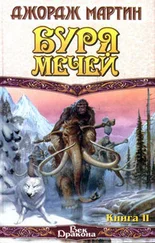
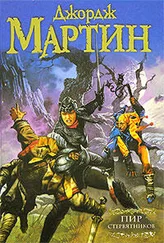

![Джордж Мартин - Сыны Дракона [лп]](/books/33039/dzhordzh-martin-syny-drakona-lp-thumb.webp)
